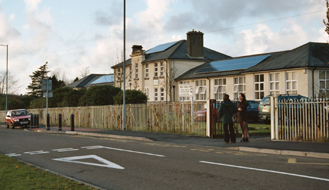 |
 |
 |
 |
 |
 |
 |
 |
 |
 |
 |
 |
Project summary
Name of the case study
Awel Aman Tawe Community Energy Project.
Where is it located?
UK
What type of activity is it?
Awel Aman Tawe is working to regenerate a whole community by focussing on energy production and reduction. This includes improvement of the existing building stock, the construction of renewable energy sources and new build housing that incorporates renewables/energy efficiency measures.
Short description of the case study
Awel Aman Tawe is a holistic community scheme set up to regenerate or enhance a community through the installation of energy efficiency measures and renewable energy sources with a focus on community involvement, participation and community decision making.
The scheme developed from a community meeting in 1998 held to discuss social and economic problems in the Aman and Upper Swansea Valleys which are semi-rural, former coal mining areas. At the meeting the idea of a community owned wind farm was suggested as an innovative and effective method of bringing profits back into the locality through the production of electricity and as an alternative to proposed open cast mines.
The wind farm development involved a year of consultation on the idea of a community wind farm. 13,000 local residents were included from 14 villages surrounding the proposed site, which was followed by a referendum which voted in favour of the proposal.


Location of proposed windfarm and photovoltaic panels on school roof
The project has been guided by the use of two tools :
* The Participatory Assessment Process, a tool that steered the public participation process over 10 months,
* The Sustainable Livelihoods Approach which helped open up the projects approach from being focused on the end result to focussing on the processes involved and what they could achieve.
As a result of the use of the tools the development of the wind farm became less important than the issue of community regeneration in the form of local peoples livelihoods, community change and involvement.
The PETUS key issues associated with this case study are:
Energy: The Visual Impact of energy supply systems
Energy: the ownership of renewable energy sources to gain public support.
What tools were used to assess sustainability?
For the Awel Aman Tawe Project as a whole:
Sustainable Livelihoods Approach (SLA)
For the wind farm proposal:
Environmental Impact Assessment (EIA)
For the wind farm proposal:
Participatory Assessment Process (PAP)
More information